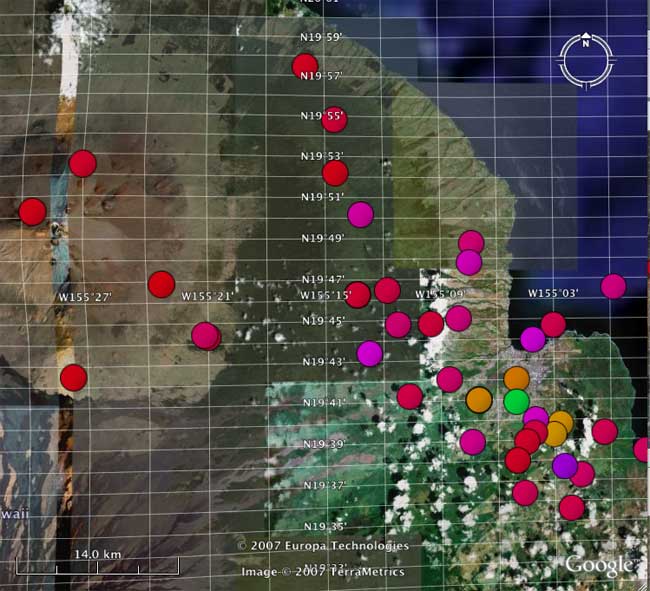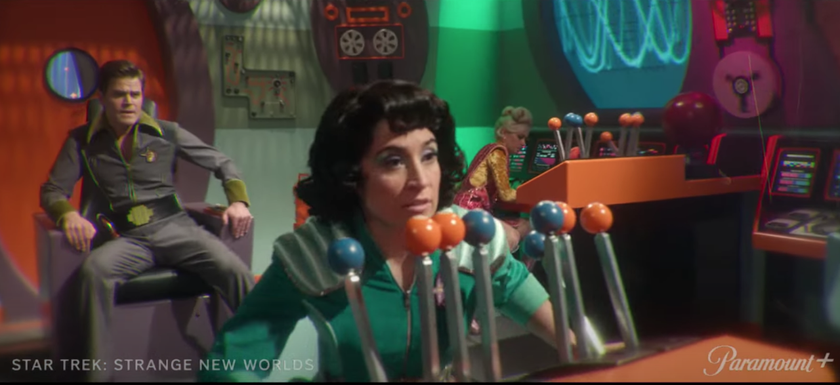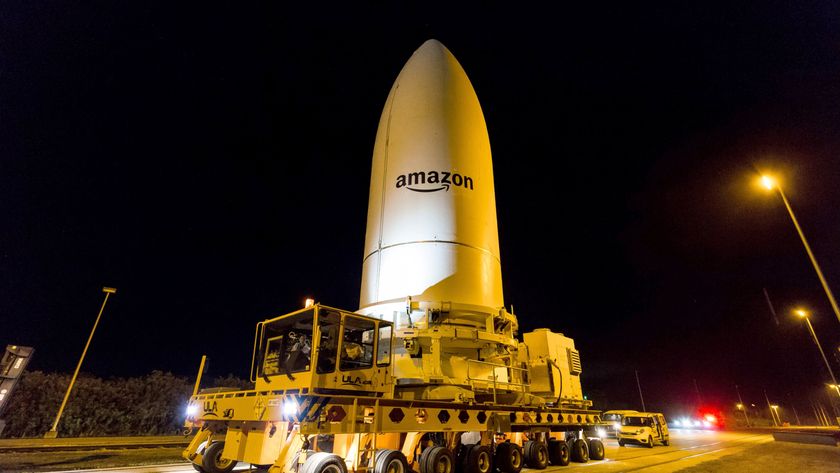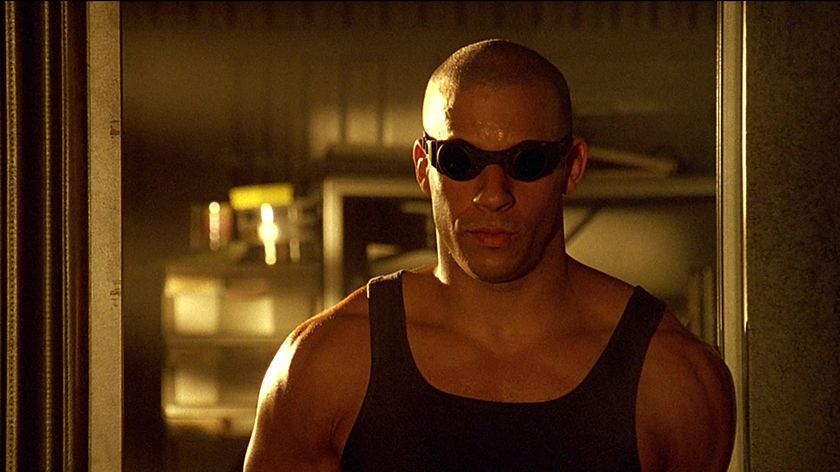Citizen Scientists Measure Bright Skies

Astronomyis about photons: collecting and analyzing photons of all energies reveals theuniverse. When the professional astronomy community assembles, as it has herein Hawaii, there's a high density of photon hunters. Ironically, the stars arehardly visible outside our hotels. Like other high-rise cities, Honolulu floods the night sky with light. Worldwide, many people live in urban andsuburban centers under light polluted skies where the stars are barely visible.
Earlierthis year in March, a globespanning star party invited people to measure the light pollution in theirneighborhood skies as a part of "Globe at Night." Here at the AASmeeting, a team of astronomers and educators from the National OpticalAstronomy Observatory reported on the preliminary data from the 2007 campaign.So far, the 2007 Globe at Night campaign has logged almost double the number ofmeasurements at the 2006 campaign. It's an expanding project that engages thepublic in collecting valuable data.
The idea ofcitizen scientists counting the stars at night to assess light pollutionoriginated with campaigns in Greece and Austria. In 2006, several US organizations collaborated to initiate a US-based naked-eye star counting with "Globe at Night". Thestandard, or classic program is to observe the constellation Orion, and compareyour sky with a set of star maps representing different levels of lightpollution. It's simple, produces reliable data, and engages people in manyplaces. This year, US reports were received from 49 of 50 states.
For 2007,NOAO expanded the observing program with the addition of handheld digitalsky-brightness meters to measure sky glow, a.k.a., light pollution. StephenPompea, an astronomer and manager of science education at NOAO said, "Theclassic version is clearly gaining momentum. The digital mode, usingsky-brightness meters procured and distributed with special funding supportfrom the National Science Foundation, came together just in time and the earlyresults from this prototype project show great promise."
The new,digital meters were shipped to teachers and students, amateur astronomers,science centers and museums, and observatories in the US, Mexico, Chile?where NOAO operates and observatory?to collect and report measurements. More than800 sets of digital data have been submitted, and the team anticipates furtherreports. Sample citymaps of selected locales include Tucson, the home of NOAO, Washington DC, Richmond VA, Sonora Mexico, the island of Hawai'i and Las Vegas.
ConnieWalker, an astronomer and senior educator at NOAO, is lead coordinator forGlobe at Night. She explained "These initial maps are only a first look,but the data show signs of good consistency and a gradient of bright to darkmeasurements as one moves from the city center to outlying areas." Ultimately,this sort of data can provide ground truth to satellite-based measurements ofnight sky lightpollution.
With a smile, Walker explained that people were very creative in the data collectionstrategies. Teams of students took multiple measurements at the same site, andaveraged the data to submit it to Walker. In other cases, GPS-equipped teamsdrove about their hometowns, shot the sky through the "moon roofs" oftheir cars, and recorded the data with corresponding GPS position. Most all ofthe 135 teams making digital skybrightness measurements are now proposing an extended set of year-roundmeasurements. Observations through the night could record the changing patternsof night lighting levels, or seasonal lighting changes that depend upon sportsarenas and other urban activities. There's also the possibility of discoveringdark sky oases amidst the light polluted skies, and obtaining the observationsthat can be used to defend these dark spaces.
Get the Space.com Newsletter
Breaking space news, the latest updates on rocket launches, skywatching events and more!
Walker looks forward to working with theteams collecting digital data, and to expanding the program to include morepeople and locations as we approach 2009, the InternationalYear of Astronomy (IYA). She's the US Chairperson for the Dark SkiesWorking Group for IYA, and sees the 2007 campaign as a successful model forcreating a worldwide network of citizen scientists using both their eyes andsimple light meters to assess light pollution.
At a timewhen we're all becoming conscious of the conspicuous consumption of energy,assessing our light polluted skies is a first step toward better energymanagement. And, as both an educator and photon hunter, I truly hope it is alsoa step toward darker skies. It's not simply about better conditions forastronomical observations; rather, it's about restoring the beauty of the nightsky for everyone.
- Practical Astronomy: Figure Out How Dark Your Sky Is
- Disappearing Stars: How 2,500 Points of Light have Dwindled to 15
- Czech Republic Enacts World's First National Light Pollution Law
Join our Space Forums to keep talking space on the latest missions, night sky and more! And if you have a news tip, correction or comment, let us know at: community@space.com.

Edna DeVore is a science and astronomy educator and the former Director of Education and Public Outreach for the SETI Institute. She earned an undergraduate degree from the University of Pacific followed by a master's degree in instructional technology from San Jose State and a master's in astronomy from the University of Arizona. In 1992, Edna joined the SETI Institute, where she wrote features on space exploration, astrobiology and more, some of which appeared on Space.com. She was among the first principal investigators to propose projects to NASA's Office of Space Science and receive funding for educational programs. Edna went on to work on education and public outreach for NASA's Kepler space telescope and SOFIA flying telescope missions. Edna received numerous awards during her tenure at SETI, including NASA Honor Awards for her work on Kepler and SOFIA, and Aerospace Awareness Award for Women in Aerospace in 2005. Edna retired in 2013.











